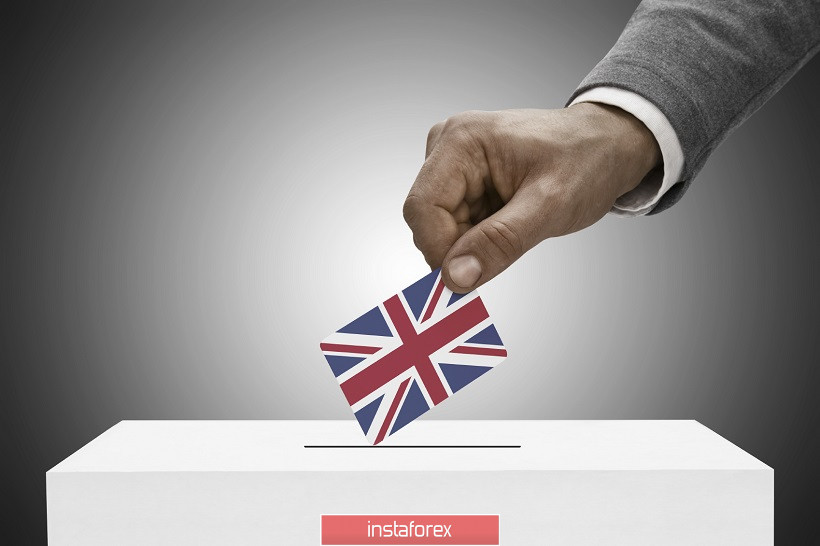Yesterday, the pound paired with the dollar tested the 30th figure again for the first time since the end of October. The sharp rise in prices was associated not only with the strengthening of the British currency, but also with the weakening of the dollar. At the same time, the dollar index updated multi-week lows yesterday in response to an external fundamental background. Now, if the pound is waiting for December 12, which is the day of the British Parliament, the US currency is afraid of another date - December 15. On this day, the United States intends to introduce a new 15% duty on Chinese imports in the amount of $ 160 billion. Trump's recent statements indicate that the fate of the new duties is in the hands of China itself: either Beijing makes concessions and concludes a deal, or the trade war continues. Against this backdrop, the dollar has come under significant pressure, as a new round of global conflict is filled with another round of interest rate cuts by the Fed.

But let's start with the British events. The pound is fully focused on the ups and downs of the election campaign, where the main competitors of Boris Johnson - the Labor Party - are either gaining momentum or losing ground. The elections will be held next Thursday, so the latest polls reflect the most likely picture of the electoral preferences of the British. Yesterday, a Survation poll was published which allowed the pound to re-enter the 30th figure, while the GBP/USD pair stayed in the area of 1.2870-1.2930 throughout November. According to the published data, conservatives firmly hold leadership, while building up their positions. Moreover, 42% of respondents are ready to vote for them (which is 2% better than the previous Survation poll, which was held in November). Labor is also supported by 33% of the British polled. The liberal democrats, who are in favour of abolishing the Breakbeat as such, lost significantly-they lost 4% at once, gaining only 11%.
Thus, conservatives confidently hold the power, thereby increasing the probability of approval of the deal with Brussels in early January. Previously, traders quite restrained about such polls: the specificity of the British electoral system does not allow identifying the party rating with the estimated number of seats in the House of Commons. However, a key opinion poll from YouGov was published last week, whose experts used a methodology more adapted to the British electoral system. So, according to YouGov, the Conservative Party will be able to form an independent majority in the House of Commons with a substantial margin of almost 40 votes. For conservatives, this will be the best result since 1987, that is, from the time of Margaret Thatcher. In turn, the Labor Party will be able to get no more than 210 seats, whereas now, Corbyn "owns" 262 votes in the House of Commons. Scottish nationalists can count on 43 seats, while ardent opponents of Brexit - the Liberal Democrats - are forecasting only 13 seats in parliament.
In other words, Brexit's "soft" scenario appeared distinctly on the horizon again, with all the ensuing consequences. Of course, the mere fact of approval of the transaction will not entail an increase in the interest rate by the English regulator. Moreover, the key macroeconomic indicators of Britain leave much to be desired. On the other hand, the pound will get rid of the "heavy anchor", which kept the currency for three years from large-scale growth in those periods when there were all prerequisites for the development of the upward trend. Thus, it is worth noting that having fixed in the region of the 30th figure, traders of the GBP/USD pair can expect to reach the next resistance level - 1.3180 (the upper line of the Bollinger Bands indicator on the weekly chart).
However, this price increase will only be available to buyers of the pair after December 12 - that is, if the forecasts from YouGov come true. By the way, the experts of this agency were the only ones who predicted the collapse of Theresa May in the early elections in 2017. As a result, conservatives lost the majority; they were forced to enter into a coalition alliance with the Democratic Union Party. So, will YouGov's forecasts turn out to be as accurate this time? Time will tell. The wait is not long. Let's wait for a little more than a week.
On the other side, the American currency is now fully focused on the external fundamental background. Donald Trump returned the import duties on Brazilian and Argentinian steel and threatened to introduce additional duties on Chinese imports again if the parties did not come to a common denominator in the negotiations by December 15. Thus, with a high degree of probability, we can assume that in this case the Federal Reserve will resort to another reduction in the interest rate at the beginning of next year. At the same time, recent macroeconomic data (especially in the manufacturing sector) speak in favor of this scenario. For example, the ISM manufacturing index which was published this week remained below the key 50-point level and moved into the red zone, reaching 48.1. For comparison: in November last year, this indicator reached the level of 59.3.
Thus, the GBP/USD pair retains the potential for further growth: negative news from the "US-Chinese front", as well as positive ratings for conservatives, will push the pair into the area of the 30th figure. However, a more substantial price increase is possible after December 12, in case that the party of Boris Johnson really forms a majority in the House of Commons.





















